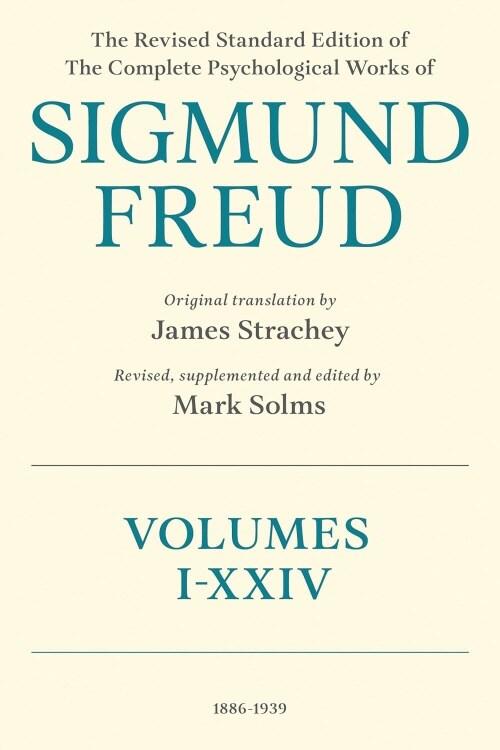책 이미지

책 정보
· 분류 : 외국도서 > 의학 > 약리학
· ISBN : 9780470582299
· 쪽수 : 320쪽
목차
Preface xiii
CHAPTER 1 The Practice of Pharmacometrics 1
1.1 Introduction 1
1.2 Applications of Sparse Data Analysis 2
1.3 Impact of Pharmacometrics 4
1.4 Clinical Example 5
CHAPTER 2 Population Model Concepts and Terminology 9
2.1 Introduction 9
2.2 Model Elements 10
2.3 Individual Subject Models 11
2.4 Population Models 12
2.4.1 Fixed-Effect Parameters 13
2.4.2 Random-Effect Parameters 14
2.5 Models of Random Between-Subject Variability (L1) 17
2.5.1 Additive Variation 17
2.5.2 Constant Coefficient of Variation 18
2.5.3 Exponential Variation 18
2.5.4 Modeling Sources of Between-Subject Variation 19
2.6 Models of Random Variability in Observations (L2) 19
2.6.1 Additive Variation 20
2.6.2 Constant Coefficient of Variation 21
2.6.3 Additive Plus CCV Model 22
2.6.4 Log-Error Model 24
2.6.5 Relationship Between RV Expressions and Predicted Concentrations 24
2.6.6 Significance of the Magnitude of RV 25
2.7 Estimation Methods 26
2.8 Objective Function 26
2.9 Bayesian Estimation 27
CHAPTER 3 NONMEM Overview and Writing an NM-TRAN Control Stream 28
3.1 Introduction 28
3.2 Components of the NONMEM System 28
3.3 General Rules 30
3.4 Required Control Stream Components 31
3.4.1 $PROBLEM Record 31
3.4.2 The $DATA Record 32
3.4.3 The $INPUT Record 35
3.5 Specifying the Model in NM-TRAN 35
3.5.1 Calling PREDPP Subroutines for Specific PK Models 35
3.5.2 Specifying the Model in the $PK Block 38
3.5.3 Specifying Residual Variability in the $ERROR Block 45
3.5.4 Specifying Models Using the $PRED Block 49
3.6 Specifying Initial Estimates with $THETA, $OMEGA, and $SIGMA 50
3.7 Requesting Estimation and Related Options 56
3.8 Requesting Estimates of the Precision of Parameter Estimates 62
3.9 Controlling the Output 63
CHAPTER 4 Datasets 66
4.1 Introduction 66
4.2 Arrangement of the Dataset 68
4.3 Variables of the Dataset 71
4.3.1 TIME 71
4.3.2 DATE 71
4.3.3 ID 72
4.3.4 DV 74
4.3.5 MDV 74
4.3.6 CMT 74
4.3.7 EVID 75
4.3.8 AMT 76
4.3.9 RATE 77
4.3.10 ADDL 78
4.3.11 II 79
4.3.12 SS 80
4.4 Constructing Datasets with Flexibility to Apply Alternate Models 80
4.5 Examples of Event Records 81
4.5.1 Alternatives for Specifying Time 81
4.5.2 Infusions and Zero-Order Input 81
4.5.3 Using ADDL 82
4.5.4 Steady-State Approach 83
4.5.5 Samples Before and After Achieving Steady State 83
4.5.6 Unscheduled Doses in a Steady-State Regimen 84
4.5.7 Steady-State Dosing with an Irregular Dosing Interval 84
4.5.8 Multiple Routes of Administration 85
4.5.9 Modeling Multiple Dependent Variable Data Types 86
4.5.10 Dataset for $PRED 86
4.6 Beyond Doses and Observations 87
4.6.1 Other Data Items 87
4.6.2 Covariate Changes over Time 88
4.6.3 Inclusion of a Header Row 89
CHAPTER 5 Model Building: Typical Process 90
5.1 Introduction 90
5.2 Analysis Planning 90
5.3 Analysis Dataset Creation 92
5.4 Dataset Quality Control 93
5.5 Exploratory Data Analysis 94
5.5.1 EDA: Population Description 95
5.5.2 EDA: Dose-Related Data 99
5.5.3 EDA: Concentration-Related Data 99
5.5.4 EDA: Considerations with Large Datasets 111
5.5.5 EDA: Summary 115
5.6 Base Model Development 116
5.6.1 Standard Model Diagnostic Plots and Interpretation 116
5.6.2 Estimation of Random Effects 130
5.6.3 Precision of Parameter Estimates (Based on $COV Step) 137
5.7 Covariate Evaluation 138
5.7.1 Covariate Evaluation Methodologies 140
5.7.2 Statistical Basis for Covariate Selection 141
5.7.3 Diagnostic Plots to Illustrate Parameter-Covariate Relationships 143
5.7.4 Typical Functional Forms for Covariate-Parameter Relationships 148
5.7.5 Centering Covariate Effects 156
5.7.6 Forward Selection Process 160
5.7.7 Evaluation of the Full Multivariable Model 167
5.7.8 Backward Elimination Process 169
5.7.9 Other Covariate Evaluation Approaches 171
5.8 Model Refinement 172
CHAPTER 6 Interpreting the NONMEM Output 178
6.1 Introduction 178
6.2 Description of the Output Files 178
6.3 The NONMEM Report File 179
6.3.1 NONMEM-Related Output 179
6.3.2 PREDPP-Related Output 180
6.3.3 Output from Monitoring of the Search 180
6.3.4 Minimum Value of the Objective Function and Final Parameter Estimates 182
6.3.5 Covariance Step Output 186
6.3.6 Additional Output 187
6.4 Error Messages: Interpretation and Resolution 188
6.4.1 NM-TRAN Errors 188
6.4.2 $ESTIMATION Step Failures 189
6.4.3 $COVARIANCE Step Failures 190
6.4.4 PREDPP Errors 191
6.4.5 Other Types of NONMEM Errors 192
6.4.6 FORTRAN Compiler or Other Run-Time Errors 193
6.5 General Suggestions for Diagnosing Problems 193
CHAPTER 7 App lications Using Parameter Estimates from the Individual 198
7.1 Introduction 198
7.2 Bayes Theorem and Individual Parameter Estimates 200
7.3 Obtaining Individual Parameter Estimates 202
7.4 Applications of Individual Parameter Estimates 204
7.4.1 Generating Subject-Specific Exposure Estimates 204
7.4.2 Individual Exposure Estimates for Group Comparisons 210
CHAPTER 8 Introduction to Model Evaluation 212
8.1 Introduction 212
8.2 Internal Validation 212
8.3 External Validation 213
8.4 Predictive Performance Assessment 214
8.5 Objective Function Mapping 217
8.6 Leverage Analysis 220
8.7 Bootstrap Procedures 222
8.8 Visual and Numerical Predictive Check Procedures 223
8.8.1 The VPC Procedure 223
8.8.2 Presentation of VPC Results 225
8.8.3 The Numerical Predictive Check (NPC) Procedure 229
8.9 Posterior Predictive Check Procedures 229
CHAPTER 9 User-Written Models 232
9.1 Introduction 232
9.2 $MODEL 235
9.3 $SUBROUTINES 236
9.3.1 General Linear Models (ADVAN5 and ADVAN7) 236
9.3.2 General Nonlinear Models (ADVAN6, ADVAN8, ADVAN9, and ADVAN13) 238
9.3.3 $DES 238
9.4 A Series of Examples 240
9.4.1 Defined Fractions Absorbed by Zero- and First-Order Processes 240
9.4.2 Sequential Absorption with First-Order Rates, without Defined Fractions 242
9.4.3 Parallel Zero-Order and First-Order Absorption, without Defined Fractions 243
9.4.4 Parallel First-Order Absorption Processes, without Defined Fractions 245
9.4.5 Zero-Order Input into the Depot Compartment 246
9.4.6 Parent and Metabolite Model: Differential Equations 247
CHAPTER 10 PK/PD Models 250
10.1 Introduction 250
10.2 Implementation of PD Models in NONMEM 251
10.3 $PRED 252
10.3.1 Direct-Effect PK/PD Examples: PK Concentrations in the Dataset 253
10.3.2 Direct-Effect PK/PD Example: PK from Computed Concentrations 255
10.4 $PK 256
10.4.1 Specific ADVANs (ADVAN1–ADVAN4 and ADVAN10–ADVAN12) 256
10.4.2 General ADVANs (ADVAN5–ADVAN9 and ADVAN13) 257
10.4.3 PREDPP: Effect Compartment Link Model Example (PD in $ERROR) 257
10.4.4 PREDPP: Indirect Response Model Example: PD in $DES 259
10.5 Odd-Type Data: Analysis of Noncontinuous Data 261
10.6 PD Model Complexity 262
10.7 Communication of Results 263
CHAPTER 11 Simulation Basics 265
11.1 Introduction 265
11.2 The Simulation Plan 265
11.2.1 Simulation Components 266
11.2.2 The Input–Output Model 266
11.2.3 The Covariate Distribution Model 270
11.2.4 The Trial Execution Model 273
11.2.5 Replication of the Study 274
11.2.6 Analysis of the Simulated Data 275
11.2.7 Decision Making Using Simulations 275
11.3 Miscellaneous Other Simulation-Related Considerations 276
11.3.1 The Seed Value 276
11.3.2 Consideration of Parameter Uncertainty 277
11.3.3 Constraining Random Effects or Responses 278
CHAPTER 12 Quality Control 285
12.1 Introduction 285
12.2 QC of the Data Analysis Plan 285
12.3 Analysis Dataset Creation 286
12.3.1 Exploratory Data Analysis and Its Role in Dataset QC 287
12.3.2 QC in Data Collection 287
12.4 QC of Model Development 288
12.4.1 QC of NM-TRAN Control Streams 289
12.4.2 Model Diagnostic Plots and Model Evaluation Steps as QC 290
12.5 Documentation of QC Efforts 290
12.6 Summary 291
References 292
Index 293





















